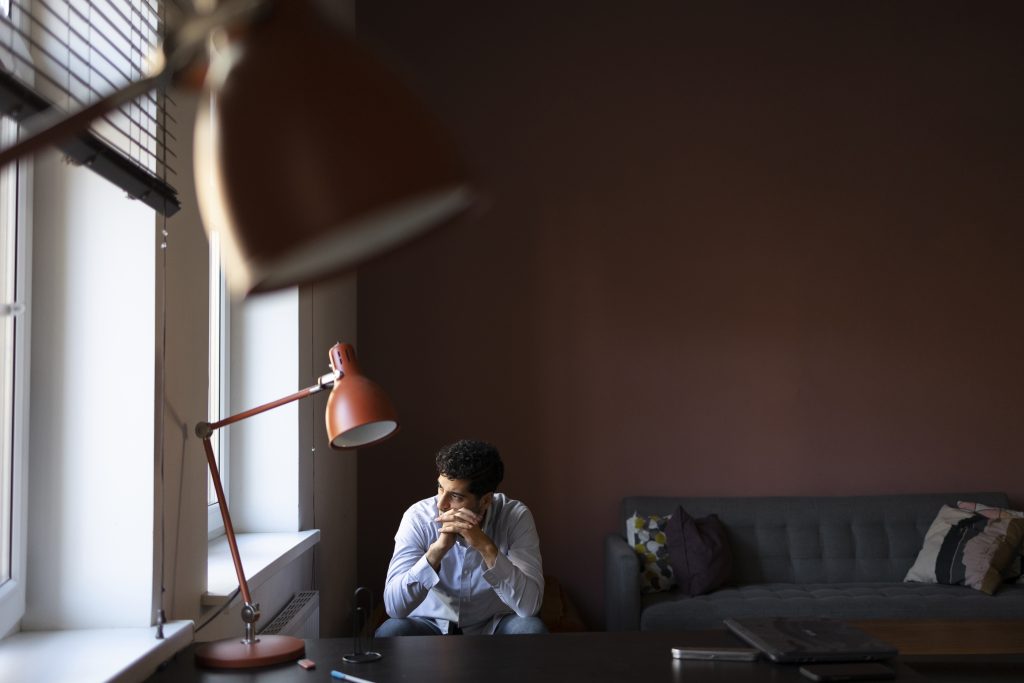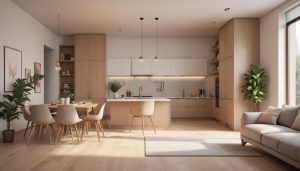Why We Think Better in Certain Rooms
Jessica White July 23, 2025
It’s widely acknowledged that our surroundings significantly impact our mental states. Whether you’re brainstorming in a quiet office, reflecting in a cozy nook, or working in a bustling cafe, the space around us influences how we think, learn, and create. But why do we think better in some rooms than others? This article delves into the science of how our environment affects cognitive function, memory retention, and creativity, and why we should consider room design when seeking optimal thinking.

The Connection Between Space and Cognitive Performance
Human beings are highly sensitive to their surroundings. The colors, lighting, noise level, layout, and even the types of furniture in a room can impact how well we focus, how effectively we problem-solve, and how creative we feel. In fact, studies show that the environment plays a critical role in influencing our brain’s performance, affecting everything from decision-making to emotional regulation.
1. The Science Behind Environmental Influence on Thinking
Our brain is constantly processing information from the environment, which can either facilitate or hinder cognitive processes. One key aspect of environmental influence on thinking is how our surroundings interact with the brain’s neuroplasticity, which refers to its ability to reorganize and form new neural connections.
Environmental cues can activate certain brain networks, influencing cognitive tasks. For example, a clean and quiet room may stimulate a brain state that enhances focus and logical thinking, while an open and colorful space may promote creativity and problem-solving. Researchers have found that even slight variations in environmental factors—such as natural light, noise levels, or even the arrangement of furniture—can have a direct impact on our mood, energy levels, and the quality of our thinking.
2. How Noise Levels Affect Cognitive Performance
Noise is one of the most widely studied environmental factors that influences cognitive performance. Research has shown that high levels of noise can reduce concentration and memory retention. For example, a study from the Journal of Environmental Psychology found that participants who worked in noisy environments performed worse on memory and attention tasks than those in quiet rooms.
On the other hand, moderate levels of background noise, such as that found in a coffee shop or an open office, can sometimes enhance creativity. A 2012 study published in Psychological Science found that participants in a moderate noise environment (around 70 decibels) performed better on creative tasks than those in a very quiet or very loud environment. This is likely because moderate noise levels provide just the right amount of stimulation to the brain, pushing it to think more creatively.
3. Lighting and Color: Their Impact on Mood and Focus
The colors and lighting in a room also significantly affect how we think. Research from the University of Pennsylvania found that natural light can boost concentration and improve memory. It’s believed that exposure to natural light helps regulate our circadian rhythm, which in turn affects our energy levels and cognitive function. Rooms with ample natural light are more likely to enhance focus and help you feel alert, reducing fatigue during long working hours.
Colors in the room also play a crucial role in influencing mood and productivity. For instance, blue tones have been shown to enhance focus and concentration, making them ideal for spaces where analytical thinking is needed. Meanwhile, green is associated with creativity and relaxation, making it perfect for brainstorming sessions. Red, on the other hand, can stimulate energy, but it’s also associated with heightened stress levels and can be distracting in high-focus tasks.
The Emergence of Thoughtfully Designed Spaces for Deep Thinking
As we learn more about the connection between our environment and cognitive function, we see a growing trend toward designing spaces that foster deeper thinking, better learning, and heightened creativity. Workplaces, schools, and even homes are increasingly being designed with cognitive performance in mind. Here are a few trends and strategies that are shaping the way we design our spaces to encourage optimal thinking.
1. The Rise of Biophilic Design
Biophilic design refers to the practice of incorporating natural elements into the built environment to enhance well-being. Studies have shown that exposure to nature, even in the form of indoor plants or natural materials, can improve cognitive function, reduce stress, and increase creativity. The idea is that bringing nature indoors—whether through natural light, plants, or nature-inspired designs—helps restore attention and promotes better mental clarity.
Companies and educational institutions are increasingly adopting biophilic design principles. Offices are featuring green walls, plants, and natural wood furniture to create more calming, productive environments. Some schools are incorporating outdoor classrooms or indoor gardens to enhance focus and creativity in students. The incorporation of nature into everyday spaces reflects the growing understanding of how crucial environmental factors are for cognitive performance.
2. Flexible Workspaces for Diverse Thinking Needs
In modern workspaces, flexibility is key. The traditional office setup with rows of cubicles has given way to more dynamic and adaptable workspaces that can cater to different thinking and working styles. For example, some areas are designed for collaborative teamwork, while others are intended for deep individual focus. This flexibility allows employees to choose a space that best suits the task at hand.
These modern, adaptable office designs often include quiet zones for deep work, lounge areas for brainstorming, and open spaces for casual discussions. This trend highlights the understanding that different cognitive tasks benefit from different environments, and that a one-size-fits-all approach is no longer effective.
3. The Impact of Digital Detox Spaces
As our lives become increasingly digital, the need for spaces that promote mental clarity and focus without distractions has grown. Many companies are now offering “digital detox” spaces, which are free from screens and digital distractions. These spaces encourage employees to step away from technology for a while, allowing them to think more deeply and refresh their minds.
In addition to offices, many people are also creating digital detox zones at home—places where they can disconnect from their devices and engage in more reflective, mindful activities like reading, journaling, or meditating. These spaces help us recharge and refocus, improving our cognitive performance by allowing our minds to rest and reset.
Conclusion
In conclusion, the environments we work, study, and live in have a profound impact on how we think, learn, and create. Whether it’s through the noise levels, lighting, or color schemes, our physical surroundings can stimulate or hinder cognitive function. As the importance of environmental influence becomes more recognized, we see an increasing trend of thoughtful design aimed at fostering better cognitive performance.
By understanding and leveraging the role of space in shaping our thinking, we can create environments that maximize our productivity, creativity, and focus. The next time you find yourself struggling to think clearly, consider the room you’re in—and think about how it might be influencing your mental state. A thoughtfully designed environment may just be the key to unlocking your next big idea.
Reference
- Biophilic Design & Nature Exposure, https://plantsolutions.com
- Effects of lighting and sound factors on environmental sensation, perception, and cognitive performance in a classroom, https://www.researchgate.net
- Effects of nature on restorative and cognitive benefits in indoor environment, https://www.nature.com







